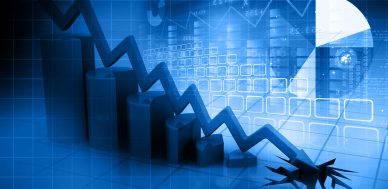Economic Slowdown Becoming a Likely Scenario for the U.S.
An economic slowdown could be ahead for the United States, not robust growth. Don’t be shocked if the economic data turns bad in late 2018; even a recession could become reality in early 2019.
Just recently, the Bureau of Economic Analysis (BEA) reported that the U.S. gross domestic product (GDP) grew at annual pace of 4.1% in the second quarter of 2018. (Source: “National Income and Product Accounts Gross Domestic Product: Second Quarter 2018 (Advance Estimate), and Comprehensive Update,” Bureau of Economic Analysis, July 27, 2018.)
The mainstream media cheered over this, and all of a sudden there was a wave of optimism.
Be very careful though; don’t jump to conclusions just by looking at the headline GDP numbers.
The GDP numbers only tell us what happened in the previous quarters, and these numbers get revised several times. So, in the next few months, the second-quarter GDP figures could turn out to be much different than they look now.
Don’t forget, the Donald Trump administration reduced the tax rates for corporate America not too long ago. Tax cuts tend to give a boost to the economy, hence we have seen robust growth since then.
Look at the Leading Indicators, Not the Lagging Indicators
It can’t be stressed enough: when trying to figure out where the U.S. economy is heading in the long term, look at the leading indicators—the ones that tell us how businesses and consumers are going to behave.
GDP is a lagging indicator. You see, consumer spending, for example, adds a lot to the U.S. GDP. If consumers turn pessimistic, it hurts consumer spending. As a result, the overall U.S. economy also gets hurt.
American consumers affect the U.S. economy so much that if they pull back on spending, an economic slowdown follows.
With this said, it appears that U.S. consumers are rethinking their spending.
Look at the chart below. It plots year-over-year percentage changes in the quarterly figures of new orders at durable goods manufacturers in the United States.
(Source: “Manufacturers’ New Orders: Durable Goods,” Federal Reserve Bank of St. Louis, last accessed July 27, 2018.)
Keep in mind, durable goods are things that last a long time. They are products like furniture and home appliances. Consumers buy these things when they are optimistic and comfortable about spending money.
In early 2010, durable goods manufacturers were witnessing robust growth in their orders. The growth rate of new orders was above 25%. Now, the growth rate is around seven percent.
This is a deceleration of more than 70%.
What does this mean? At its core, it says that consumer demand is taking a massive hit. Yes, orders are growing, but the growth rate is slowing.
Investors Beware
Dear reader, new orders at durable goods manufacturers is just one example in a growing list of indicators suggesting that an economic slowdown is ahead for the United States.
Yes, the U.S. economy grew in the second quarter of this year, but I am skeptical going forward.
Looking at the 4.1% GDP growth rate, the Federal Reserve could decide to raise interest rates much faster than planned. This would cool the economy, and that is why a recession could become reality in early 2019.
If you are a stock investor, be very careful. Stock markets tend to move ahead of the economy. The 4.1% GDP growth may have already been priced into the markets. If a slowdown is ahead, don’t be surprised if we see markets react by falling.
